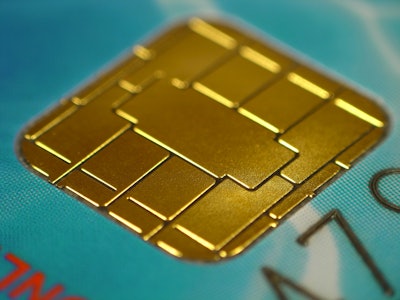
A lot has been written from a business perspective about the shift to smart chip payment technology by October 1, known as EMV (EuroPay, MasterCard and Visa) technology. Undoubtedly, compliance and liability are the two strongest motivations for EMV adoption. But, as rental operators, it’s also important to understand that EMV is a customer service – it protects your customers from fraud and data breaches. Furthermore, as customers become increasingly aware of EMV, a failure to adopt the standard could be seen as a failure in customer service.
North American B2B and B2C customers have been bombarded with EMV information for a while now. Type “EMV” into Google, and you’ll find over 13 million references. But that alone wouldn’t convince consumers to value EMV; the motivation for consumers is coming from the frequent national news of data breaches and the fear of identity theft.
Customers want businesses to protect their data
A 2014 MasterCard survey indicated that almost 60 percent of respondents would welcome a chip-enabled replacement card within six months or sooner. While the average person may not fully understand the technology behind smart cards, most understand that a chip is generally more secure than a magnetic strip. It is logical for your customers to want you to give them this higher standard of protection.
EMV isn’t a silver bullet for data breaches, but it’s a major step in the right direction. The technology is essentially an encrypted handshake between the credit card and the terminal that processes it. When you insert a chip card into a terminal, data is exchanged and new data is created. This is a more elaborate way to conduct a transaction, and therefore more resistant to fraud. The software industry expects future technologies to add more layers of protection.
As with any transition, it’s prudent to plan ahead. EMV is a change, and even small changes can be disruptive. One way to smooth the process is by communicating with your employees and customers about the shift to EMV in advance. Explain any procedural changes to employees who handle card transactions, so they don’t slow down the process for customers. Explain to customers why you’re adopting EMV technology, and why it is in their best interest.
While a tidal wave of renters might not ask you for EMV this year, it’s safe to say that at least some of your top customers expect you to comply with the new standard. To avoid letting them down – and taking on liability – EMV is the right move to make.
This information will help you better understand EMV:
What is EMV?
To combat the growing problem of large-scale data breaches and increasing rates of counterfeit card fraud, U.S. credit card issuers and businesses are moving to adopt EMV technology. Smart chip cards provide stronger security than the magnetic strip cards many of us use today. Among other features and security measures, the chips prevent card skimming and cloning. Although the U.S. is one of the last countries to migrate to chip cards, the major payment brands — American Express, Visa, Discover and MasterCard — have started deploying EMV to merchants. If you and your business are cardholders, you may have received replacement cards already in the mail.
How Will EMV Impact My Business?
This October, there will be a major liability shift. Companies – including rental operations – that have adopted the new technology will generally be protected from financial liability resulting from card fraud in face-to-face transactions. After October, if, for example, your business is using non-EMV-compliant hardware, you would likely be held liable for fraudulent face-to-face credit card transactions.
How Can I Take Action?
This change in liability is a compelling reason to upgrade your card payment equipment to support EMV technology. This is critical to ensure that your business isn’t held liable in the event fraud does occur. And, over time, consumers will likely begin to expect that smart-chip credit card payments are accepted wherever they go. So, take the time to examine your equipment and talk with your technology provider about upgrade options. For more information, read Visa’s guide to building an “EMV Chip Acceptance Game Plan.”
EMV compliance will be a step toward bringing an end to the chaos brought by massive security breaches and credit card fraud.

















